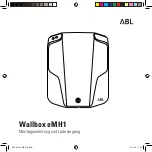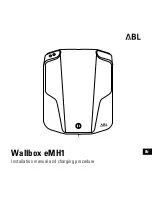
Active Stop-and-Go Assist requires you, as the
driver, to keep your hands on the steering wheel
at all times so that you are able to intervene at
any time to correct the course of the vehicle and
keep it in lane.
Observe the notes on driving systems and your
responsibility; you may otherwise fail to recognise
dangers (
/
page 237).
Active Stop-and-Go Assist activates automatically
when all of the following conditions are met:
R
You are in a traffic jam on a motorway or high-
speed major road.
R
Active Distance Assist DISTRONIC is activated
and active (
/
page 252).
R
Active Steering Assist is activated and active
(
/
page 260).
R
You are travelling no faster than 60 km/h.
When Active Stop-and-Go Assist is active the
¬
status display appears in the driver's dis-
play.
System limits
The system limitations of Active Distance Assist
DISTRONIC and Active Steering Assist apply to
Active Stop-and-Go Assist (
/
page 258).
DSR (Downhill Speed Regulation)
Function of DSR (Downhill Speed Regulation)
DSR is an aid to assist you when driving downhill.
It keeps the speed of travel at the selected target
speed. The steeper the downhill gradient, the
greater the D S R braking effect on the vehicle.
On flat stretches of road and uphill gradients, the
DSR brakes the vehicle minimally or not at all.
When DSR is activated and the transmission is in
position
h
,
k
or
i
, DSR controls the driving
speed. The target speed can be set to a value
between 2 km/h and 18 km/h. By braking or
accelerating, you can drive at a higher or lower
speed than the target speed at any time.
If you drive faster than 45 km/h or change the
driving programme (except in
F
/), DSR
switches off automatically. The
î
off
message
appears in the driver's display. The status indica-
tor in the driver's display goes out. You also hear
a warning tone.
&
WARNING Risk of skidding and accident
when DSR is activated on slippery road
surfaces
If the driven speed and the target speed differ,
the wheels may lose traction.
#
Take into account the road surface and
the difference between the driving speed
and target speed before activating DSR.
Observe the notes on driving systems and your
responsibility; you may otherwise fail to recognise
dangers (
/
page 237).
You are always responsible for keeping control of
the vehicle and for assessing whether the downhill
gradient can be negotiated. Depending on road
surface and tyres, DSR may not always be able to
keep to the target speed. Select a target speed
suitable for the environmental conditions and also
apply the brakes yourself if required.
Driving and parking 257
Summary of Contents for GLC 200 4MATIC
Page 9: ...Left hand drive vehicles 6 At a glance Cockpit...
Page 11: ...Left hand drive vehicles 8 At a glance Cockpit plug in hybrid...
Page 13: ...Driver s display 10 At a glance Indicator and warning lamps...
Page 15: ...12 At a glance Overhead control panel...
Page 17: ...14 At a glance Door operating unit and seat adjustment...
Page 19: ...16 At a glance Emergencies and breakdowns...
Page 597: ......
Page 598: ......
Page 599: ......
















































